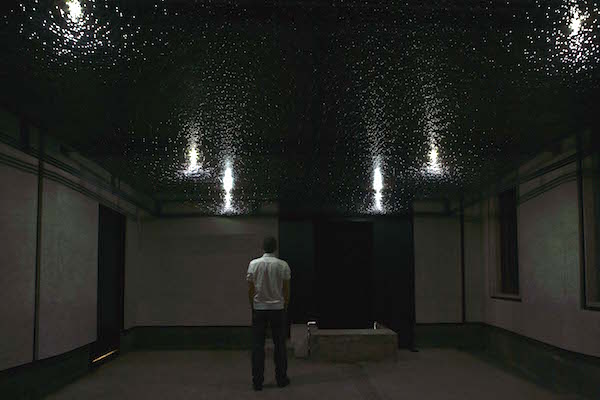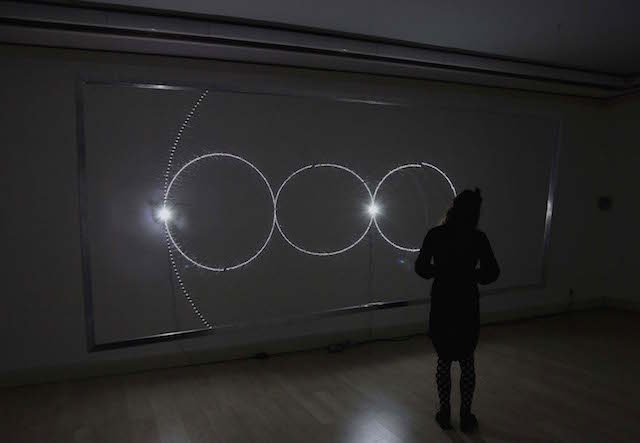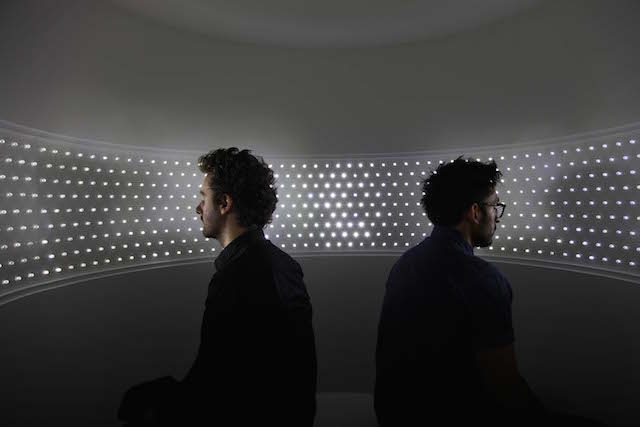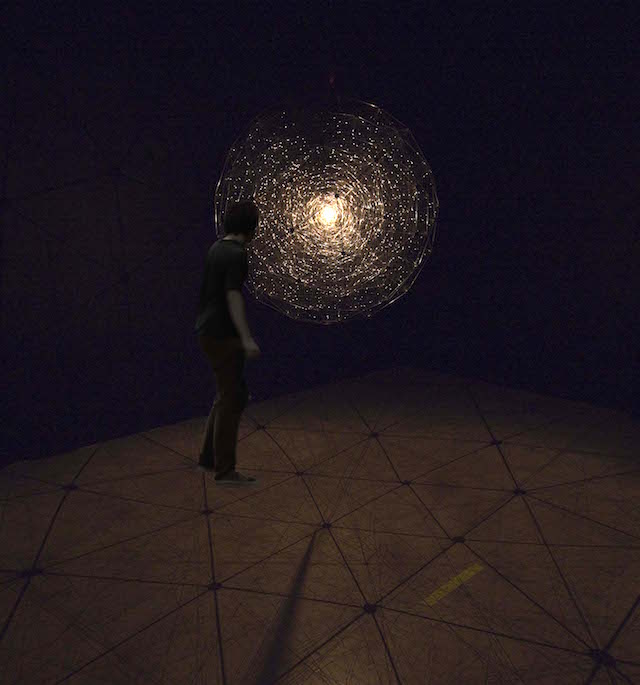Art
Exposing the Unseen: Ivana Franke on Visual Phenomena
Artist Ivana Franke investigates our perceptual understanding of time and space. Drawing from disciplines such as neuroscience and optics, she creates spatial structures and installations that reveal unusual visual phenomena. Her project Seeing with Eyes Closed, for example, a collaboration with neuroscientist Ida Momennejad, explores the visual effects caused by flickering light. Participants in the “experiment” sit in a dark room and close their eyes. A stroboscopic light begins to flash, inducing quasi-hallucinations of flowing forms and colors.
Here, Franke discusses her fascination with visual phenomena, her interdisciplinary approach, and her desire to challenge the imagination.
What is the point of departure for your work?
There are certain types of experiences that I’m interested in: perceptions of visual stimuli that appear ephemeral, ambiguous, wavering, or “mysterious.” They are perceptually evident and cognitively puzzling, simultaneously obvious and momentarily impossible to explain or measure. Ultimately, they make us unsure in our own frame of reference.
These phenomena appear at the thresholds of our visual and spatial perception; we normally filter them out. I experiment with orchestrating them in such a way that they become apparent. My process varies, but it always includes extensive research and many experiments.
How did you become interested in challenging viewers to reconsider experience and perception?
Experience – sensing and producing sensations – is the loop that conditions our involvement with the world at the most basic level. I was studying in Croatia during the war in the ‘90s. Oppressive situations generally affect our minds by inducing a sense of claustrophobia and reducing our capacity to imagine the future. In a sense, I was faced with an existential question: how is it possible to see and imagine beyond the proximal space-time?
As a visual artist, I started to investigate what aesthetic experience is made of – the relation between perception/cognition and environment on a fundamental level, as well as visual phenomena that have the potential to open our minds towards the unknown, towards time and spaces that are larger than ourselves and what we are part of. That is how I came to work with the threshold of our visual and spatial perception. Threshold experiences ask us to focus on the invisible, un-representable and immeasurable, in aesthetic, visual and spatial terms. In many ways it’s about seeing beyond the immediately apparent – transcending and transgressing the limits of conditioning imposed by our environment, economic and political conditioning, and our own psychology.
To what extent do you work with other disciplines?
It is indispensable for me to have conversations with people from other fields who are working on the same problems I am but approaching them from a different perspective. Those conversations, and often collaborations, expand my knowledge and also allow me to see my own work it from other angles, as well as to articulate or confirm intuitions.
For example, I have worked with the phenomenon of shine, or highlight, as it produces a very specific type of experience. It is called “animacy” – where visual stimuli appear alive – and it has been studied in vision science. Knowledge from that field is necessary to understand the perceptual processes that give rise to that particular experience. The most radical example is work that uses flicker-induced quasi-hallucinations that can be only, to some extent, explained by neuroscientists. In addition to cognitive neuroscience, vision science, phenomenology, my practice generally relies on research in optics and geometry, and on understanding of architecture
Your work finds a balance between space, aesthetics, and audience (or participants). Is any one of these a priority for you?
Experience happens at the interface – a place of connection between what we call the outside world and the inner one – where consciousness and physics meet. That interface becomes visible in the moments when the solidity of the surroundings and/or the observer become unstable, when two phenomena overlap and affect each other, or form a link with each other.
So, all three of those elements always play a role, but depending on the particular work, there may exist an emphasis on one of them. Sometimes the focus is on the bodily experience of being in the space (In the Faraway Past and in The Future), on mental images (We Close our Eyes and See a Flock of Birds), or on the geometry of the space. But my work always takes on its final form in the mind of the observer.
You recently spent time in Boston for a residency. Did any new ideas come out of this experience?
In November, I spent a month at the Isabella Stewart Gardner Museum where I focused on researching the ways the light shapes the experience of ambiguity within the museum. Usually the lighting in museums is designed in a way as to preserve the constancy of the appearance of the objects that are exhibited. At the ISGM, the atrium with skylights and windows facing all directions allows light to pass through the museum and constantly change the appearance of the objects. That ambiguity allows visitors to read the collection subjectively. I also had a chance to meet several amazing scientists and visit labs at MIT and Harvard. Curator Pieranna Cavalchini and I are currently preparing the symposium/investigation day based on this research with specialists from different fields working on threshold perceptual phenomena.
What’s next for you and your work?
I recently realized the exhibition Potential Degrees of Freedom at the Museum of Contemporary Art Zagreb. The question I was trying to raise is if we can possibly imagine higher dimensions within our intuitive three-dimensional physical space, in an actual and metaphorical sense. A related project in which we will try to test the computational capacities of the brain by projecting four-dimensional bodies on three-dimensional space is in development.
I am currently working on the next phase of the project Seeing with Eyes Closed. The cortical activity of the brain while it is exposed to flickering light will be “translated” into light and an installation and will create a loop with the effects flicker has on the brain. I am also developing a large-scale public installation with 3LHD architects and writing a scientific abstract with vision scientist Bilge Sayim for the European Conference on Visual Perception.
Explore more of Ivana Franke’s work on her website.
Interview by: Elaine Ritchel










